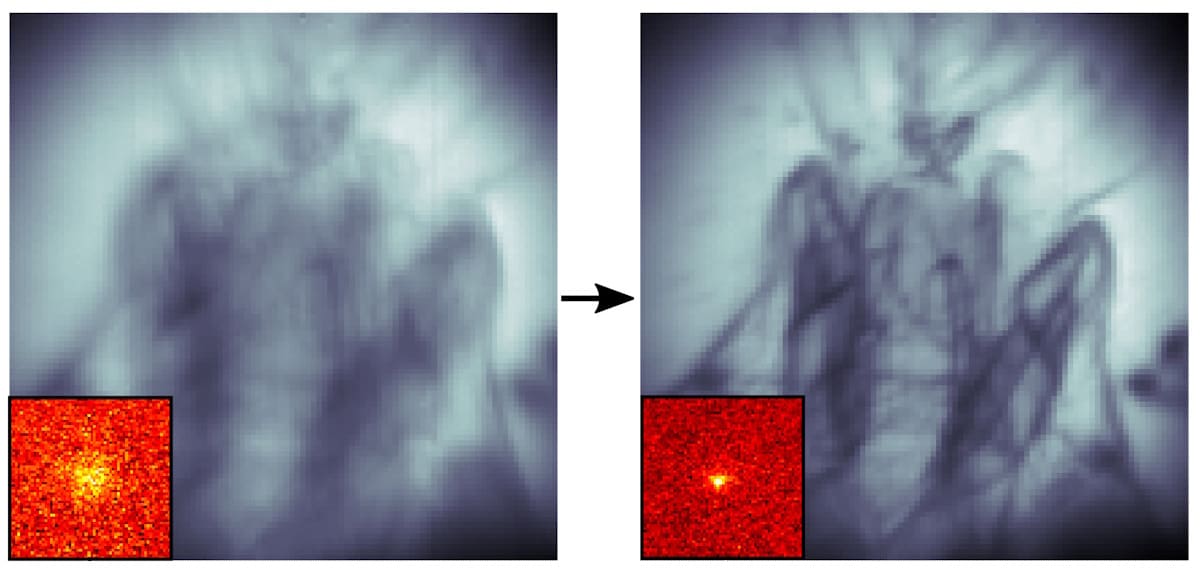
Researchers are harnessing the properties of quantum physics to measure distortions in microscopy images and produce sharper images.
Currently, image distortions caused by aberrations from flaws in a sample or imperfections in optical components are corrected using a process called adaptive optics. Conventional adaptive optics relies on a bright spot identified in the sample that serves as a reference point (the guide star) for detecting aberrations. Devices such as spatial light modulators and deformable mirrors then shape the light and correct for these distortions.
For samples that don’t contain bright spots naturally (and can’t be labelled with fluorescence markers), image-based metrics and processing techniques have been developed. These approaches are dependent on the imaging modality and the nature of the sample. Quantum-assisted optics, on the other hand, can be used to access information about aberrations independent of imaging modality and sample.
Researchers at the University of Glasgow, the University of Cambridge and CNRS/Sorbonne Université are measuring aberrations using entangled photon pairs.
Quantum entanglement describes particles that are interconnected regardless of the distance between them. When entangled photons encounter an aberration, their correlation is lost or distorted. Measuring this correlation – which contains information such as phase that’s not captured in conventional intensity imaging – and then correcting for it using a spatial light modulator or similar devices, can improve sensitivity and image resolution.
“There are two aspects [of this project] that I find very exciting: the link that there is between the fundamental aspect of entanglement and the strong correlation you have; and the fact that it’s something that can be useful in practice,” says Hugo Defienne, senior CNRS researcher on the project.
In the team’s setup, entangled photon pairs are generated through spontaneous parametric down conversion in a thin crystal. Anti-correlated photon pairs are sent through a sample to image it in the far field. An electron-multiplying charge-coupled device (EMCCD) camera detects the photon pairs and measures photon correlations and conventional intensity images. The photon correlations are then used to bring the image into focus using spatial light modulation.
The researchers demonstrated their guide star-free adaptive optics approach using biological samples (a bee head and leg). Their results showed that the correlations can be used to produce higher-resolution images than conventional bright-field microscopy.
“I think it’s probably one of the few quantum imaging schemes that is very close to something that can be used in practice,” Defienne says.

Entangled photons can see through translucent materials
Working toward wide-spread adoption of the setup, the researchers are now integrating it with reflection microscope configurations. Imaging times, currently the main limitation of the technique, can be reduced with alternative camera technologies available for commercial and research applications.
“The second future direction we have is to do aberration correction in a non-local way,” Defienne says. That technique would split the paired photons, sending one to a microscope and another to a spatial light modulator and camera. The approach would effectively create an aberration that is correlated with a conventional intensity image to arrive at a focused, high-resolution image.
The research study is published in Science.
- SEO Powered Content & PR Distribution. Get Amplified Today.
- PlatoData.Network Vertical Generative Ai. Empower Yourself. Access Here.
- PlatoAiStream. Web3 Intelligence. Knowledge Amplified. Access Here.
- PlatoESG. Carbon, CleanTech, Energy, Environment, Solar, Waste Management. Access Here.
- PlatoHealth. Biotech and Clinical Trials Intelligence. Access Here.
- Source: https://physicsworld.com/a/entangled-photons-enhance-adaptive-optical-imaging/



